|
Annotated images of the limestone pillars on Gotland Island, Sweden, they are examples of the formation of bulky bodies and layer-enforcing structures in other rocks. |
Go to I |
||
Picture/Bild 1 BGotld01.png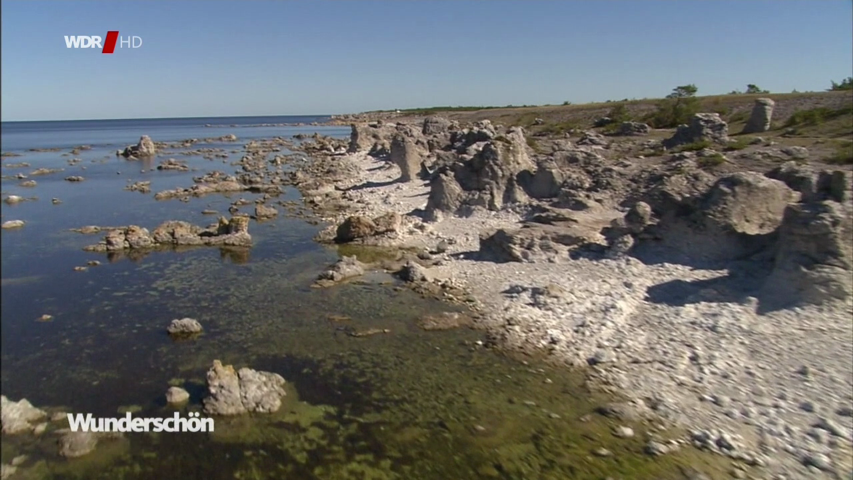 Unnamed beach, weathered limestone pillars and limestone banks indicate biogenetic structures. Silicification of the limestone is the cause of higher weather resistance. Datum: 15.06.2020 Zeit: 19:36 |
Picture/Bild 2 BGotld02.png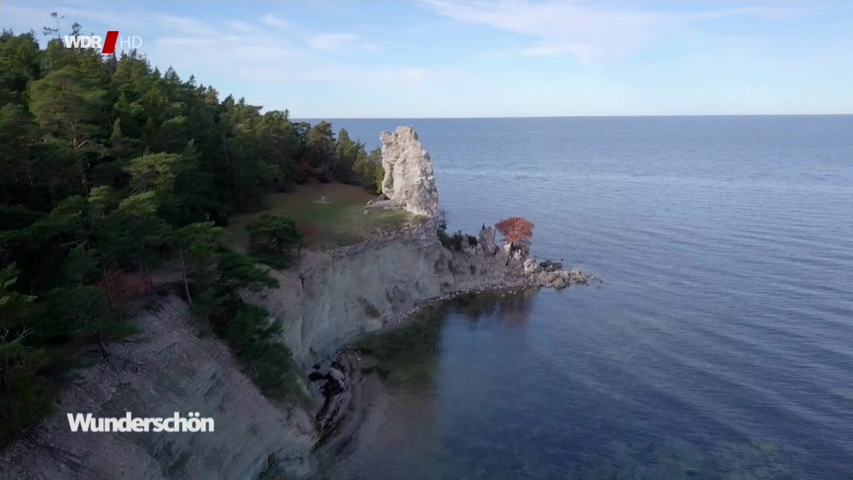 Lickershamn Jungfrun (virgins), coordinates 57.829653, 18.504829, an assigned structure in the steep lime can also be clearly seen below the land level. Datum: 15.06.2020 Zeit: 19:43 |
Picture/Bild 3 BGotld03.png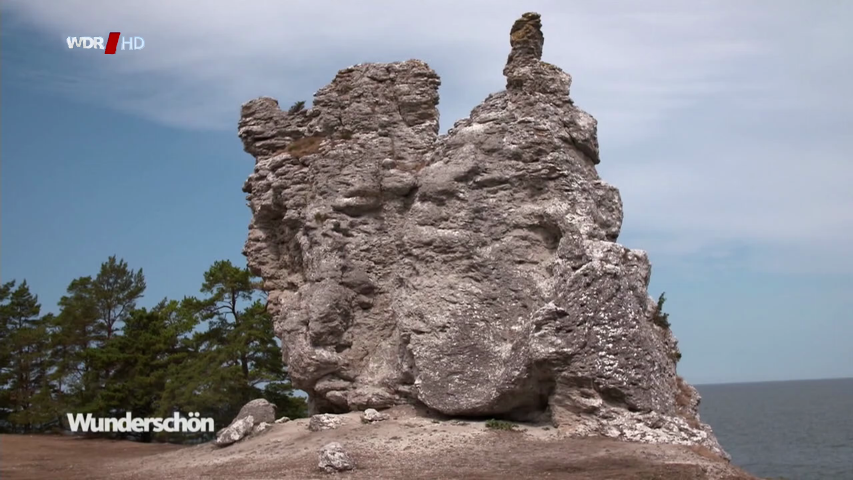 The Virgins rock formation 57.829786, 18.504903 seen from the land side. Troubled structure with bulging blocks and limited, indigenous, cracks. Datum: 15.06.2020 Zeit: 19:56 |
Picture/Bild 4 BGotld04.png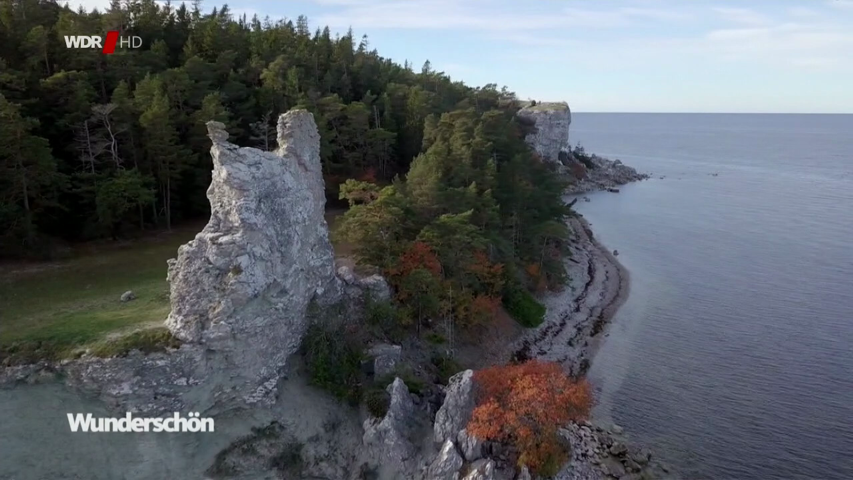 In addition to the virgins on the edge of the limestone, other limestone pillars, a more robust steep bank part at the right rear at position 57.830594, 18.501360, it forms a cape of the coastline. Datum: 15.06.2020 Zeit: 20:05 |
Picture/Bild 5 BGotld05.png Unnamed beach: Small-scale crack structures in limestone indicate volume shrinkage due to degradation biotic components of algae in sedimentation and diagenesis. Datum: 15.06.2020 Zeit: 20:16 |
Picture/Bild 6 BGotld06.png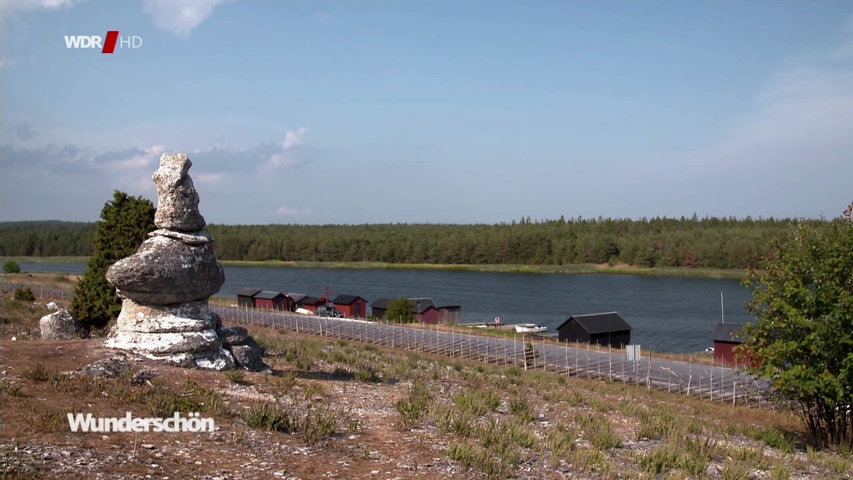 Lergrav och Husken (eastern of Valleviken) 57.795189, 18.987933, nearest building to the beach, see also the following picture.. A comparison with the Chalice stones in Oybin, Saxonia, sandstone there and more algaes, imposes itself. Datum: 16.06.2020 Zeit: 11:39 |
Picture/Bild 7 BGotld07.png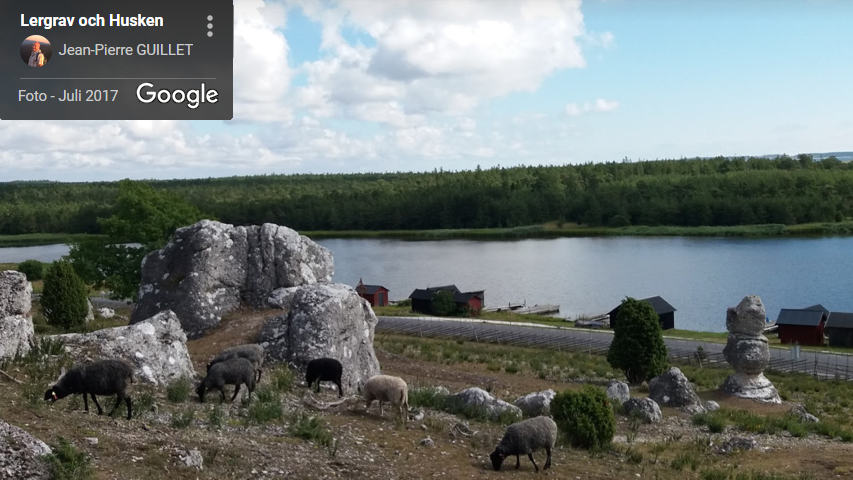 Lergrav och Husken: Photo by Google/Jean-Pierre GUILLET, at the right the pillar of picture 6. Datum: 16.06.2020 Zeit: 19:14 |
Picture/Bild 8 BGotld08.png Lergrav och Husken: Unnamed rocks, limestone with numerous small-scale formations.. Datum: 16.06.2020 Zeit: 18:16 |
Picture/Bild 9 BGotld09.png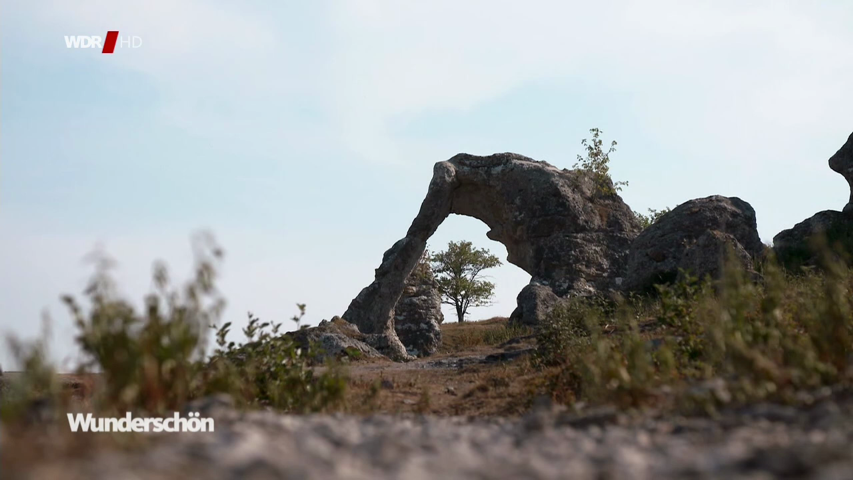 Lergravsporten (Lergravs Gate) 57.793206, 18.987792. Growth can occur to varying degrees in layers. Adhesions of initially separate, penetrating bodies are possible. Datum: 16.06.2020 Zeit: 11:48 |
Picture/Bild 10 BGotld10.png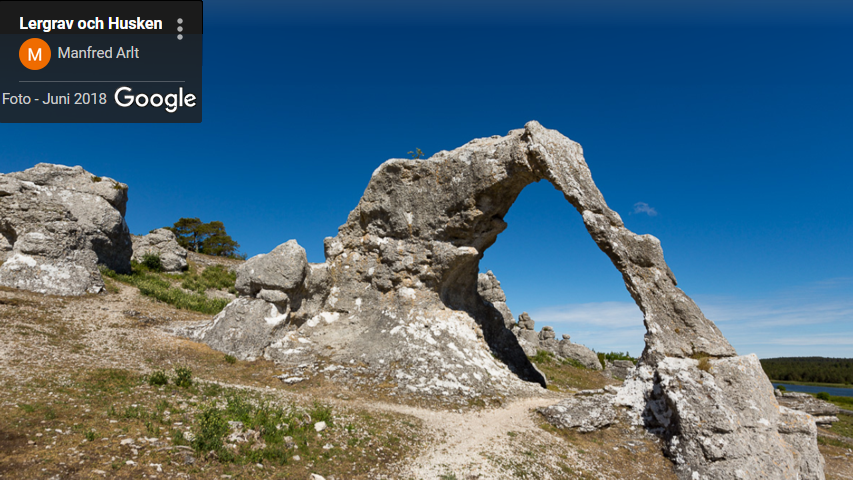 Lergravsporten (Lergravs Gate): Photo by Google/Manfred ARLT, the stratifying, diagonally ascending structuring is clearly visible. On the right, narrow, structure and also on the left body at the top right. The the right small pillar points to algae, stromatopores grow more in width. Datum: 16.06.2020 Zeit: 19:24 |
Picture/Bild 11 BGotld11.png Lightened image, probably still Lergrav: Incisive thin layer on two neighboring large buildings. Possible explanation: Strong wave motion breaks up emerging growth and disperses them. The relief created by growth is leveled. In a quieter phase stronger growth occurs again. The layers with reduced growth are usually concordant on neighboring pillars. Datum: 16.06.2020 Zeit: 18:24 |
Picture/Bild 12 BGotld12.png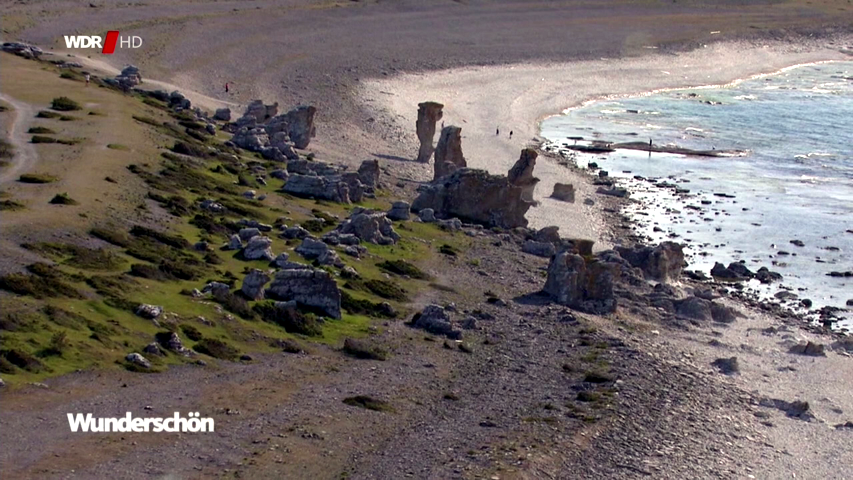 Beach Langhammars at the northern island Farö, position ~ 57.998535, 19.182354. View to southwest, they could be the most resistant parts of a disintegrated cape.. Datum: 16.06.2020 Zeit: 18:36 |
Picture/Bild 13 BGotld13.png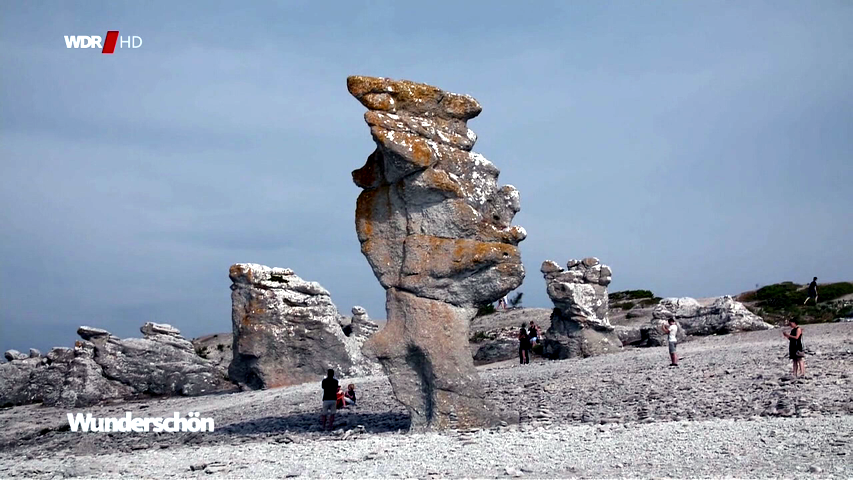 The pillars and rocks of Langhammars at the northern island Farö 57.997301, 19.180010, view to northeast. Datum: 16.06.2020 Zeit: 18:47 |
Picture/Bild 14 BGotld14.png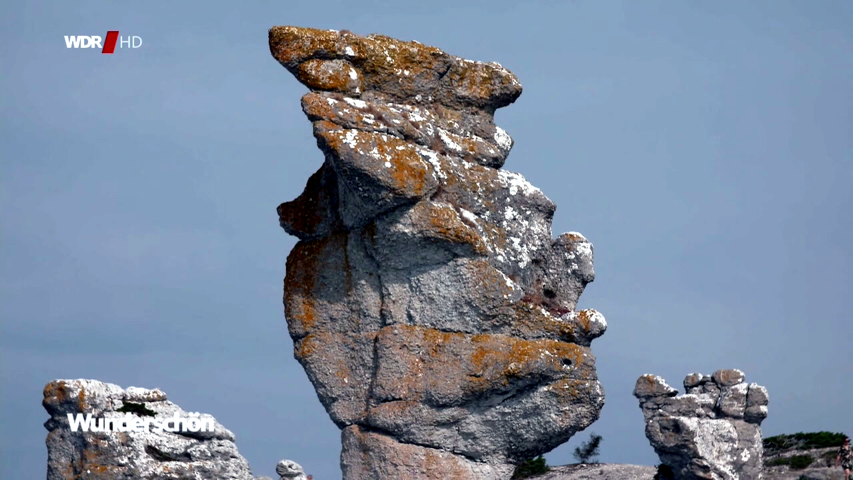 Nearly photo ~ 57.997301, 19.180010 Reddish hematite stains are at more biogenic rock structure frequently companions. In part, the hematite is washed down by rain from top to bottom. Datum: 16.06.2020 Zeit: 19:04 |
||
It is not conclusively discussed here which structures were formed by stromatopores and which by algae. With stromatopores is the lime skeleton responsible for petrification. Together with the corals, their structures can be regarded as stable for the reef structure. Strong growth is known for algae, which leads to layer thicknesses of up to decimeters. Algae substance shrinks through biodegradation more so that rock areas with limited cracks form. This phenomenon occurs in part on the reefs so that a significant proportion of algae can originally be assumed there. Another phenomenon with algae is that floating and detached parts are rolled into balls that continue to grow. Enclosed spheres are suspected but cannot be confirmed by own observation.
For geology see more:Küstenatlas Ostsee, Gotland (german).